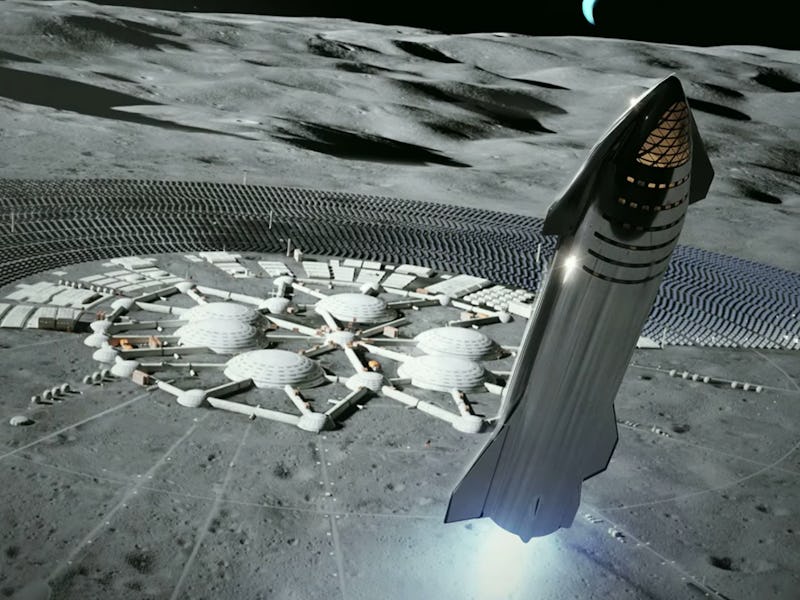SpaceX Starship: Elon Musk details tweaks to support moon base missions
SpaceX plans to make changes to its Starship rocket to make it better suited to lunar missions.

The Starship, SpaceX's giant rocket designed to send the first humans to Mars, could also play a key role in bringing a permanent base on the moon to life. To complete that project, it may have to undergo some tweaks first.
On Tuesday, SpaceX CEO Elon Musk explained how the Starship would need to undergo some adaptations to land on the moon. This would stand in contrast to other Starships, which are designed to support the sort of launches currently undertaken by the Falcon 9 and Falcon Heavy – think satellite launches and sending astronauts to the space station. The standard Starships would also be used for crewed missions to Mars, where the planet's atmosphere can be used to reduce the speed as it comes in to land.
Writing on his Twitter page in response to YouTuber Tim Dodd, Musk noted some tweaks for these special moon-bound Starships:
"We’re working on new legs. Wider stance & able to auto-level. Important for leaning into wind or landing on rocky & pitted surfaces."
Musk also explained how, with a different goal in mind versus other Starships, the moon-bound ships can afford to drop some of their other amenities:
"Forward thrusters are to stabilize ship when landing in high winds. If goal is max payload to moon per ship, no heatshield or flaps or big gas thruster packs are needed."
He also suggested the ships could help build a new lunar base:
"No need to bring early ships back. They can serve as part of moon base alpha."
It's an exciting move for the Starship project, which is designed to cover pretty much all of SpaceX's most ambitious missions for the coming years. The stainless steel ship, currently under development in Texas, is designed to send up to 150 tons of cargo or 100 people into space at a time. It's fully-reusable and uses liquid oxygen and methane as its fuel. That means humans could fly to Mars, refuel using the planet's resources, and fly home using the same ship.
Musk has made clear his intentions to send the first ships to Mars by 2022, with a view to establishing a city before 2050. But SpaceX also has plans to reach the moon. Paul Wooster, SpaceX’s principal Mars development engineer, said in October 2019 that the firm can build a base on the moon at the same time as building one on Mars.
SpaceX may have a chance to put its lunar Starship plans into action soon. NASA administrator Jim Bridenstine declared via Twitter Monday that the agency will "once again" invite private companies to take part in its plans for a moon base.
The proposal forms part of the Artemis program, a plan that also includes returning humans back to the moon. SpaceX is already expected to participate in Artemis by using its Dragon XL capsule to support the Lunar Gateway orbiting the moon.
The Inverse analysis – It's perhaps little surprise that these lunar Starships could stay behind and form part of a planned moon base. SpaceX's plans for the Mars city include sending a series of cargo Starships, which will stay on the planet and help support future crewed missions as they work to establish their first Mars base.
SpaceX appears to be considering multiple configurations of the Starship for its ambitious plans. The firm has discussed both cargo and crewed versions of the ship, with the latter hosting cabins for up to 100 people in rooms of two to three each. Another version could send people around the world in less than an hour, arranged in something closer to a rollercoaster, transporting up to 1,000 people at once.
It may not be the last time SpaceX adjusts its Starship to suit future missions, particularly as it works to create a planet-hopping network of refueling stations tat push humanity out further into space.